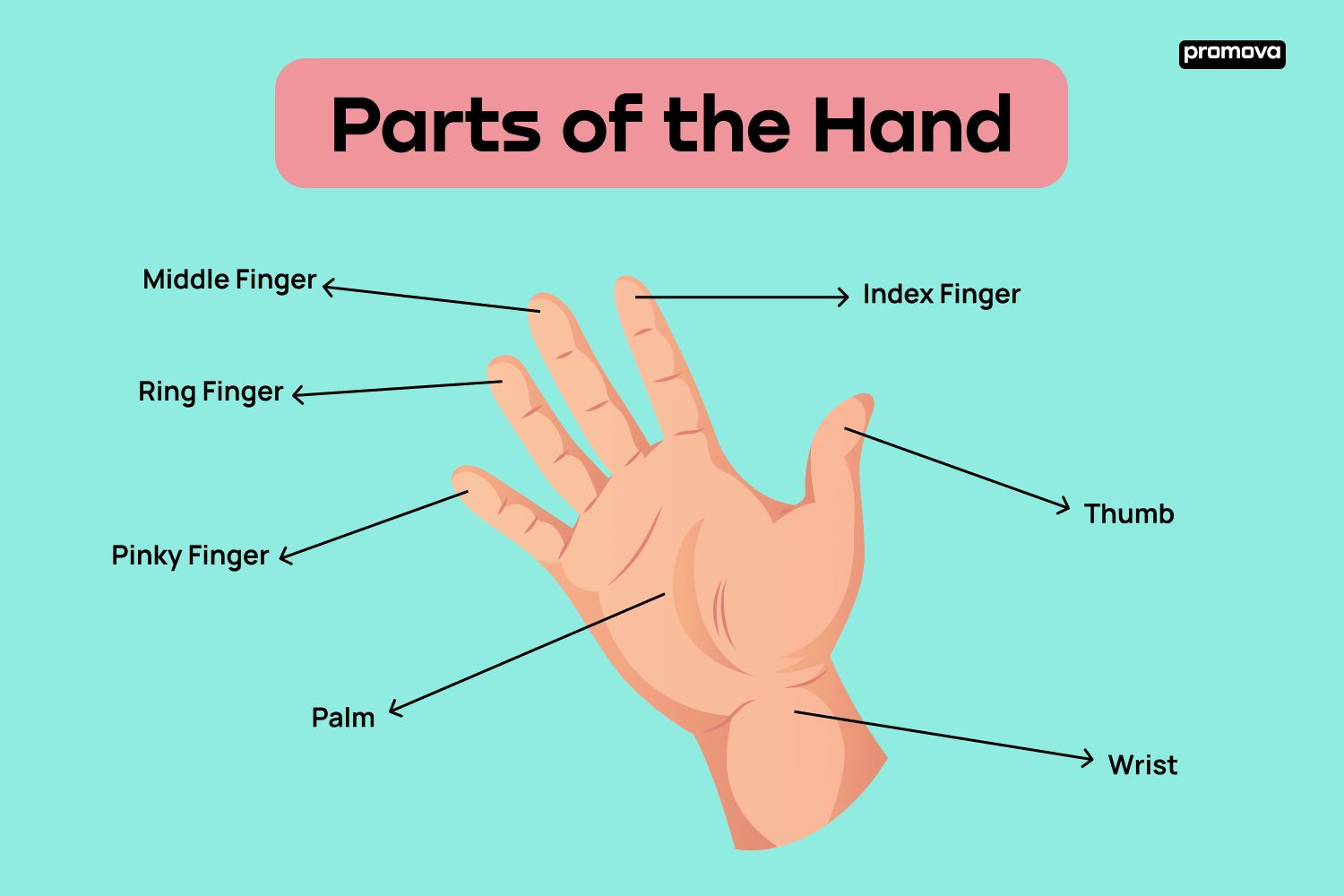Parts of the Hand Vocabulary
Contents
Knowing the parts of the hand is essential, especially if you want to describe things accurately. This article aims to teach language learners the vocabulary associated with our hands in an easy-to-understand manner.

External Parts of the Hand
As you begin learning English, knowing the basic external parts of the hand can be incredibly useful, especially for daily conversations. We've all had moments where we had to explain a bruise or a cut on our hand. Understanding and using the right vocabulary can make these moments easier.
- Thumb: hand parts name related to the short, thick first digit of the human hand, set apart from the other four.
- Index finger: the first finger next to the thumb; often used for pointing.
- Middle finger: the longest finger, located in the center of the hand.
- Ring finger: the third finger, often where wedding rings are worn.
- Pinky (or little) finger: the smallest finger, located on the outer edge of the hand.
- Palm: hand parts name related to the inner surface of the hand between the wrist and fingers; used for holding.
- Back (of the hand): the opposite side of the palm; often exposed to the sun.
- Wrist: the joint connecting the hand to the forearm.
- Knuckle: the joints of the fingers, which are prominent when a fist is made.
These hand part names are important for day-to-day interactions. Whether you're discussing an injury, fashion accessories like bracelets or watches, or simply admiring the lines on your palm, these words will be your best friends.
Nails and Cuticles
Beyond the fingers and the palm, our hands have other features that play both functional and aesthetic roles. These terms for parts of the finger will be particularly useful if you're discussing hand care or getting a manicure.
- Nail: a hard, keratinous plate covering the tip of each finger.
- Nail bed: the skin beneath the nail plate.
- Cuticle: a thin layer of dead tissue riding on the nail plate to form a seal between the nail plate and eponychium to prevent pathogens from infecting the matrix area.
- Nail matrix: the tissue (or matrix unguis) beneath the base of the nail; where nail growth originates.
- Nail fold: the fold of hard skin at the sides of the base of the nail.
The health and appearance of our nails often reflect our overall well-being. By understanding these parts of the finger, you can ensure you're taking the right steps to care for your hands and nails or effectively communicate any issues to a healthcare or beauty professional.
14
Internal Structures of the Hand
While the external parts are essential for daily conversations, knowing the internal structures can be beneficial, especially if you're pursuing a career in the medical field or are simply curious. Dive into this section, and you'll be speaking like an expert in no time.
- Phalanges: the bones of the fingers and thumb; divided into three sections except for the thumb, which has two.
- Metacarpals: the five bones located in the palm of the hand.
- Carpals: a group of eight small bones that form the wrist.
- Flexor tendons: connect muscle to bone, allowing fingers to bend.
- Extensor tendons: these tendons help in straightening the fingers.
- Lumbricals: muscles that allow fingers to move and perform complex tasks.
- Arteries: vessels that carry oxygen-rich blood from the heart to the tissues of the body; important ones in the hand include the radial and ulnar arteries.
- Veins: vessels that carry blood low in oxygen from the body back to the heart.
- Nerves: bundles of fibers that convey impulses between the brain and other parts of the body; the hand has three major nerves: the ulnar, median, and radial nerves.
Understanding the skeletal structure of the hand can be quite fascinating. Not only will it improve your vocabulary, but it also deepens your knowledge of the human anatomy. So, the next time you're watching a medical show or reading a book, you'll recognize these hand parts' names instantly. The hand's functionality is a result of its intricate muscular system. These terms might sound complex, but familiarizing yourself with them will definitely set you apart.
Conclusion
Our hands are such vital parts of our bodies, and knowing the associated vocabulary can be empowering. Remember, language is not just about communicating, but it's also about understanding the world around us in detail. As you continue your language learning journey, never hesitate to delve deeper into specific topics; you'll be surprised at the doors it can open for you.
Comments